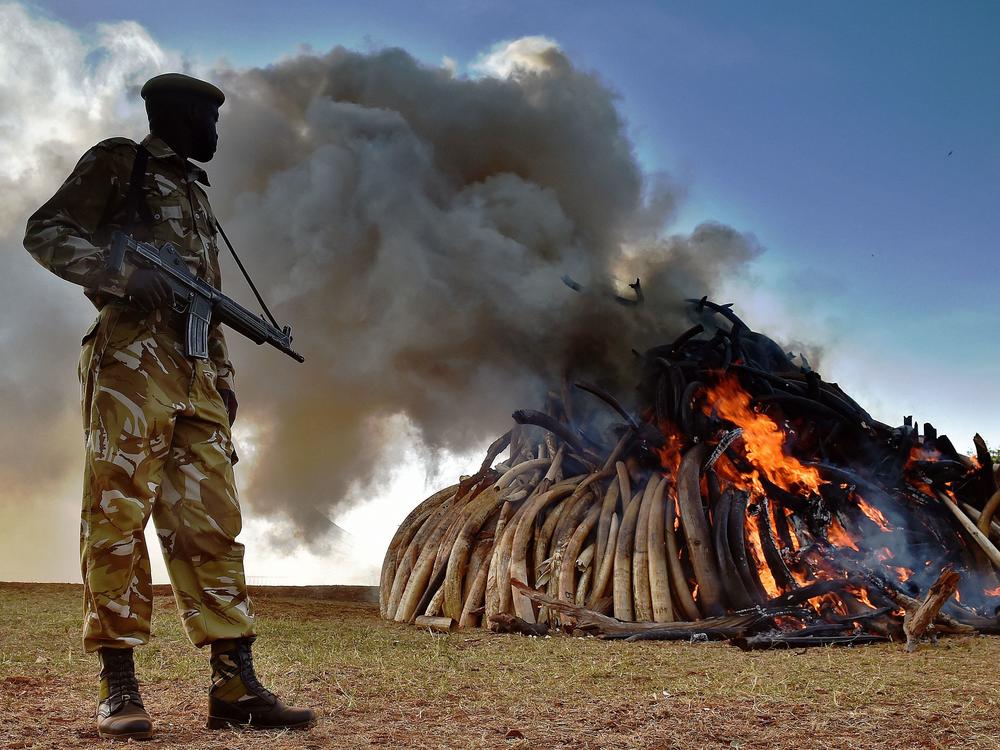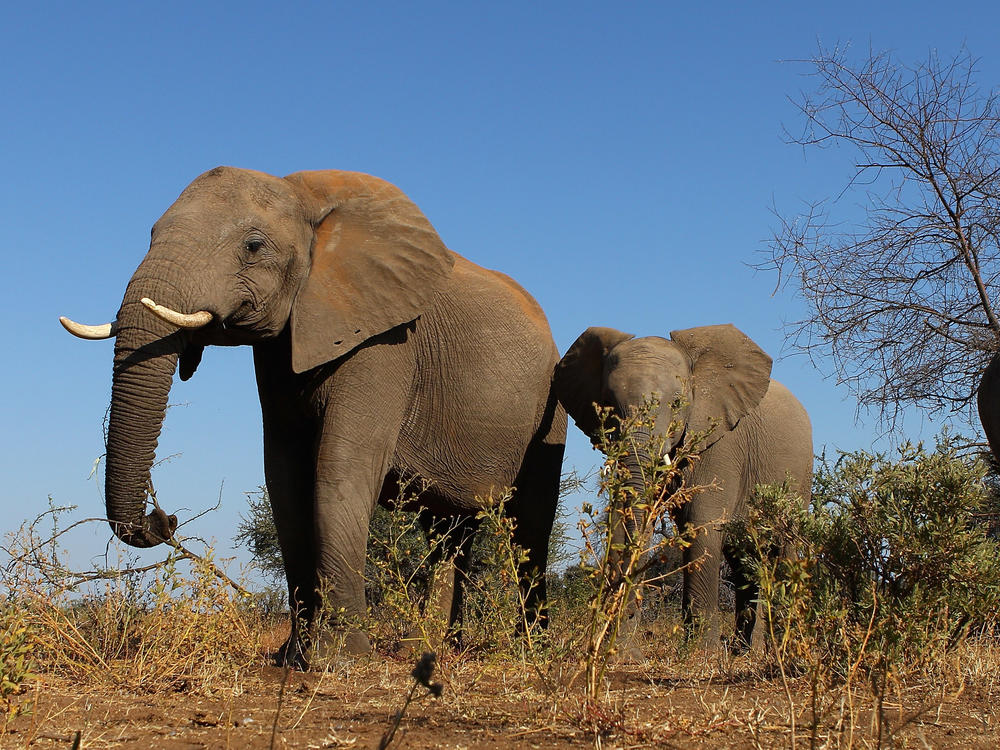Section Branding
Header Content
Elephant tusk DNA can expose poaching networks, new analysis finds
Primary Content
Researchers at the University of Washington have developed a way of using DNA from elephant tusks to solve poaching mysteries and bring animal traffickers to justice.
It's estimated at least 10,000 African elephants are killed each year, with the ivory then packed into shipping containers and transported to ports throughout Africa.
"When you open one of those containers, they often have what we call a cover load, something else ... to disguise the ivory. It could be timber. It could be coffee. It could be plastic waste," said Samuel Wasser of the University of Washington, who has been tracking these shipments for more than a decade.
A few years back, his team sequenced the DNA in seized ivory, which allowed them to link shipments from three large ivory-smuggling cartels.
Now, they've expanded the scope of that work, studying DNA from more than 4,000 tusks in 49 large ivory seizures.
"And the connectivity that we got of an individual transnational criminal organization to seizures was absolutely mind-blowing. I mean, some of them are connected to 30 different seizures," Dr. Wasser said.
The new analysis has been published in the journal Nature Human Behaviour.
"When we make these connections genetically linking seizures to one another, that then tells law enforcement that all the physical evidence they're collecting can be tied together and joined into a bigger whole, and it builds a much, much stronger investigation," Dr. Wasser said.
The analysis was co-authored by Special Agent John Brown III of the Department of Homeland Security, who said the DNA evidence could also help governments collaborate to prosecute these crimes.
"When you see that connectivity, you're able to reach out to those other jurisdictions and say, 'Hey, look, through our DNA analysis we've identified a connection to your seizure,'" he said.
Dr. Wasser said the work aided in the arrest of two ivory traffickers in Seattle last November. And he said if you stopped the traffickers, you severed the connection between the poachers and buyers overseas.
Kenya-based ecologist Benson Okita of Save the Elephants was not involved in the study. He said the DNA work was helpful, but there were other obstacles to consider.
"If there's corruption in some of these areas where this illegal trafficking is occurring, then it becomes really difficult to even arrest or prosecute successfully," he said.
Dr. Okita said another issue was economic, and ensuring that local communities benefitted from elephant conservation.
"That's where the future lies, I think, in making people understand that it is a resource that can be still useful if well managed and well conserved," he said.
If all those pieces come together, it will help ensure a future for the 400,000 African elephants that remain today.
Copyright 2022 NPR. To see more, visit https://www.npr.org.


